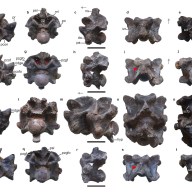Many Canadians see transport trucks as a necessary evil. Necessary, because just about any product you buy anywhere likely spent part of its journey to market on a truck. Evil, because of the noise, highway congestion, dust, vehicle size, pollution ….
Well, maybe not pollution. Changes in emission standards in both Canada and the United States, coupled with innovative new technologies, have made the latest generation of big rigs — by far — the cleanest ever seen on our highways.
“Smog emission has been completely and successfully dealt with,” says Paul R. Landry, president and CEO of the British Columbia Trucking Association.
“If you were to look at a new truck back in ’98 or ’99, you’d see smoke coming out of the stack. Every time the gas pedal went down, there’d be this puff of absolutely black smoke. Today’s trucks are extremely clean. You could go into Los Angeles with a 2010 truck, and it would take dirty air, clean it, and put it right back in circulation.”
That covers just about all dirty emissions — particulates, carbon monoxide — that haze up cities and irritate people’s lungs and eyes. And, as anyone who lives near a well-travelled road knows, also leaves a layer of dirt on windows, walls and even furniture.
Still an issue, though, is the emission of greenhouse gases like carbon dioxide. “Unfortunately, the contradiction we’ve been faced with is that, until 2010, the technology that focused on reduced smog emissions has caused us to actually consume more fuel,” Landry concedes.
“When we put on those particulate traps in 2007, it added weight to the truck, and caused an increase in energy consumption.”
The answer? Greater fuel efficiency. And there are many ways to achieve that.
“There are technologies that can be deployed in terms of aerodynamics and anti-idling devices,” Landry notes. “Similarly, a well-trained driver can reduce your fuel consumption by 10 to 15 per cent. We can use GPS to ensure we’ve got our routing right, and keep our trucks are as full as possible to reduce the number of trucks that need to be on the road. All of those things are happening.”
All of this costs money, of course. And even though fuel savings cover most upgrade costs in under two years, Landry says his industry could really use some outside help.
“We’d like to have a greater partnership with government in terms of providing access to that capital,” he concludes. “When you have to spend that extra $20,000 to $30,000 on a tractor for aerodynamics or an anti-idling device, getting your hands on that capital is really a challenge.”















